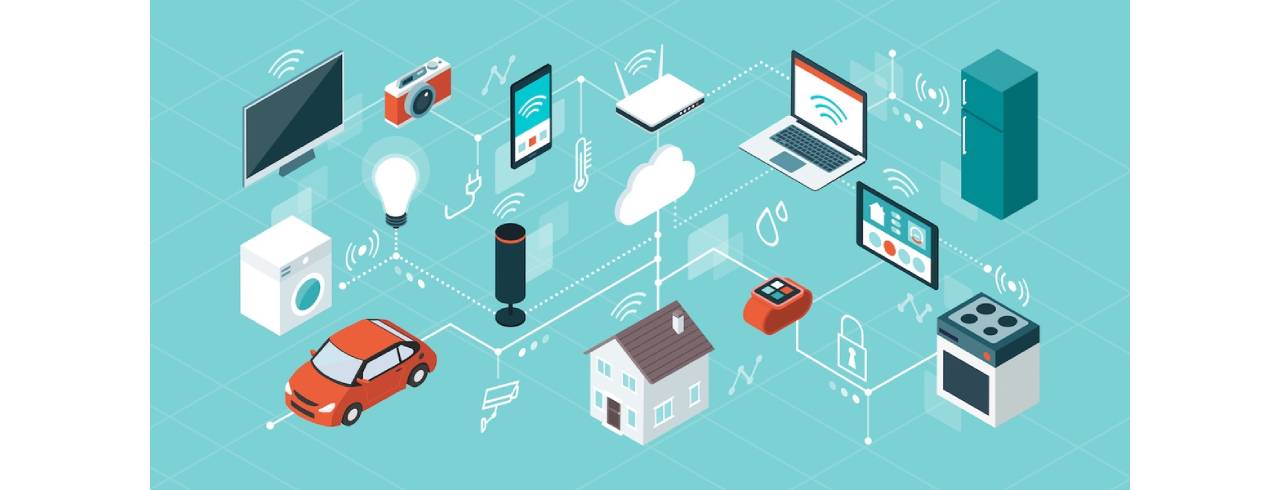Sensors, gateways, & routing devices all fall under the umbrella of IoT Hardware. Activation of the system, communications, action requirements, security, and detection of specific actions & goals are all performed by these Internet-of-things devices. The IoT products using IoT technology, the IoT hardware essential elements, the design of IoT software, and the most common IoT hardware platforms are all covered in the following sections. The hardware needs for an IoT project will also be discussed, including microcontroller development boards, SBCs, and processors.

BLE modules focus in this part on the hardware components that make up IoT systems.
The term "Thing" is used in the Internet of Things (IoT) to refer to the asset being measured, monitored, or controlled. For the top iot hardware companies, in most IoT goods, smart devices are entirely integrated into the "thing." Automated automobiles and smart refrigerators, for example, are constantly monitored and controlled themselves.
There are various applications where a specific product should be linked to prove that the "iot kit" has intelligent capabilities.
In this IoT hardware component, the primary emphasis is physical signals from the observed or seen object. Digital signals that such a computer can easily comprehend and modify are generated.
In addition to the high-speed 2 Mbps functionality and the ANT and 2.4 GHz proprietary protocols, the MS50SFA series uses all the hardware features and capabilities of the nRF52810/nRF52832 chips. BOM costs and design complexity are reduced by using an integrated DCDC inductor and external 32.768K crystal oscillator. In addition, you can get your Bluetooth design to market faster and with less risk with full regulatory certifications.
Local storage arrays, local analytics, and other computing processes are all performed using this integral processing unit.
Module for cloud-to-cloud or local-to-cloud connectivity between both the Cloud Platform & 3rd-party services.
The essential piece of IoT edge hardware is a sensor. RF modules, sensory modules, power management modules, & energy modules are some of the components of IoT sensors. For instance, they're great for use in.
IoT devices are very specialized since they operate only in specific environments & their hardware projects vary greatly. However, prototyping with generic off-the-shelf hardware can help you create custom PCBs & their components to meet the needs of your IoT solution. For example, the following IoT hardware requirements must be taken into account while launching your IoT project:
A necessity for safety
The Internet of Things relies heavily on security. The device's security requirements must be considered at all phases of the design and development process. Even in the early stages of a project, it is essential to ensure the confidentiality and reliability of any data acquired by any device. The security criteria are applied to all IoT devices, networks, service applications on websites, and mobile devices.
Developmental simplicity
When developing a prototype, ease of use is a must. Taking data and connecting to other devices and the cloud allows the user to have the IoT device up and run rapidly. Ensure that the API documentation is of high quality, accessible, and available when launching your IoT applications. The tools and assistance given by the device maker or the project team should also be considered when making a decision.
Processing and storage of large amounts of data
The volume of data to be processed is mainly related to the number of sensors attached to the resolution of the acquired data and the sampling rate. They also have an impact on the data storage and processing requirements.
Requirements for online connectivity
Connectivity requirements include operating range, distance travelled by sending signal, and the projected amount of data and transmission. Connectivity requirements for a device must consider fault tolerance, reconnection capability, and the time it takes for a device to retry sending data after a disconnect.
Requirements for power
The transmission rate of the network and the number of sensor nodes in the device have the most significant impact on the power needs. For example, if your IoT project requires a mobile power source, such as a supercapacitor or battery, or if it must be hardwired for power, you must consider these factors. The battery's size, weight, and capacity requirements should also be known, as should whether or not the battery is refilled, replaced, or thrown away after it expires. For rechargeable batteries, be sure you know how and when they are recharged.
Requirements for the design of physical devices
The hardware device's size and look are among them. Therefore, IoT devices must be designed with consideration for the environmental conditions in which they will be used. Depending on the application, a ruggedized or waterproof gadget may be required. To maintain proper operation even in extreme conditions, all appliances put on the underside of a truck as part of a fleet monitoring program should be protected. In addition, the equipment must be water-resistant, dust-proof, and vibration-resistant.
Sensors are one of the most critical pieces of IoT hardware. A wide range of components is included in these devices, including energy modules, RF and power management modules, and sensors.
Connecting & exchanging data over the internet between the best IoT devices, or "things," equipped with sensors, software, and other technologies is known as the Internet of Things (IoT).
With the Internet of Things (IoT), you may link your local resources to platforms from the other side of the world, unlike traditional data and voice. Health, logistics, automotive, and energy management are among the many industries it serves.
Things that self-report in real-time improve productivity and bring critical information to light faster than systems that rely on human involvement, which is why the Internet of Things was created.